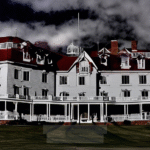What Do Ghost Sightings Reveal About the Nature of Reality?
What Do Ghost Sightings Reveal About the Nature of Reality?
The phenomenon of ghost sightings has intrigued humanity for centuries, challenging our understanding of reality and the boundaries between the living and the dead. Ghosts, spirits, and apparitions have been reported across cultures and eras, suggesting that these experiences might reveal profound truths about our existence. But what do these encounters truly say about the nature of reality? This question is not just of academic interest; it touches on our fears, beliefs, and the mysteries that lie beyond the veil of life. In this blog post, we will explore historical accounts, psychological theories, and the implications of ghost sightings on our understanding of consciousness and reality itself.
Historical Context of Ghost Sightings
Ghost sightings have been recorded throughout history, from ancient civilizations to modern times. The ancient Egyptians believed in the afterlife, and their elaborate burial rituals were designed to ensure a safe passage for the deceased. In medieval Europe, ghost stories often accompanied tales of the supernatural, with spirits appearing to offer warnings or seek vengeance. The famous “Brown Lady of Raynham Hall,” documented in 1936, is one of the most famous ghost sightings in British history. This spectral figure has been photographed and witnessed by many, raising questions about the legitimacy and persistence of ghostly phenomena.
In more recent history, the rise of spiritualism in the 19th century led to a surge in ghost sightings as people sought to communicate with the deceased. Séances became popular, and many claimed to have witnessed paranormal events. This melding of cultural beliefs and personal experiences has shaped our understanding of ghosts, often reflecting societal fears and hopes regarding death and the afterlife.
Core Concepts: What Are Ghosts?
Understanding what constitutes a ghost is essential for interpreting sightings. Generally, ghosts are perceived as the spirits of deceased individuals who have not yet moved on or are tied to specific locations. There are several theories about the nature of ghosts:
- Residual Hauntings: These are said to be imprints of energy left by traumatic events, replaying like a loop without any interaction.
- Intelligent Spirits: These are believed to be the conscious spirits of the deceased who can interact with the living.
- Elemental Spirits: Some cultures believe in non-human entities that may be mistaken for ghosts.
Each of these concepts presents a unique perspective on the nature of reality and consciousness, suggesting that our understanding of life and death may be more complex than we realize.
Psychological Perspectives on Ghost Sightings
The psychology behind ghost sightings often involves the human mind’s propensity for pattern recognition, especially in high-stress situations. Cognitive psychologists argue that our brains are wired to make sense of sensory information, sometimes leading to misinterpretations. This phenomenon, known as pareidolia, explains why people may see faces in clouds or patterns in random objects.
Additionally, the power of suggestion can play a significant role in ghost sightings. If individuals are primed to believe in the supernatural, their experiences may be influenced by cultural narratives or personal beliefs. This phenomenon can create a feedback loop where expectation drives perception, leading to genuine reports of ghostly encounters that may not have objective reality.
Physical Evidence: Photographs and Recordings
One of the most compelling aspects of ghost sightings is the physical evidence that sometimes accompanies them. Paranormal investigators often rely on photographs, audio recordings, and even video footage to substantiate claims of ghostly experiences. One of the most famous pieces of evidence is the “Ghost of a Soldier” photograph taken during the American Civil War, which purportedly shows a spectral figure among the living.
Modern technology has introduced tools like electronic voice phenomena (EVP) recorders, infrared cameras, and motion sensors, which have led to many claims of ghost sightings. However, skeptics argue that much of this evidence can be attributed to environmental factors, such as electromagnetic fields or acoustic anomalies, which can create illusions of ghostly presence.
| Evidence Type | Description | Examples |
|---|---|---|
| Photographs | Images capturing apparitions or unexplained phenomena. | Brown Lady of Raynham Hall |
| Audio Recordings | Unexplained voices or sounds captured during investigations. | EVP sessions |
| Video Footage | Visual documentation of ghostly encounters. | Ghost hunting shows |
Alternative Perspectives: Scientific Explanations
While many people believe in the existence of ghosts, the scientific community often approaches these phenomena with skepticism. Various natural explanations have been proposed to account for ghost sightings. For example, infrasound—sound waves below the range of human hearing—can create feelings of anxiety, unease, or even hallucinations. This has been documented in several haunted locations, suggesting that environmental factors can significantly influence human perception.
Additionally, sleep paralysis, a phenomenon where individuals wake up unable to move, often accompanied by vivid hallucinations, can lead people to believe they are experiencing ghostly encounters. Understanding these scientific explanations helps demystify ghost sightings, providing a more rational framework for interpreting experiences.
Common Misconceptions About Ghost Sightings
Several misconceptions persist regarding ghost sightings, often leading to confusion or false beliefs. One common myth is that all ghost sightings are inherently negative or malevolent. While some encounters may be unsettling, many reported sightings involve benign spirits or even comforting presences.
Another misconception is the idea that ghost sightings have to be accompanied by physical evidence. Many personal experiences—such as feelings of being watched or sudden temperature drops—are valid and significant, even without tangible proof. Emphasizing the subjective nature of ghost sightings helps broaden our understanding of these phenomena.
Best Practices for Investigating Ghost Sightings
For those interested in investigating ghost sightings, it’s essential to approach the subject methodically and ethically. Here are some best practices:
- Research the Location: Understanding the history and reports associated with a site can provide valuable context.
- Use Technology Wisely: Employ tools like EVP recorders or thermal cameras but remain aware of their limitations.
- Document Everything: Keep detailed records of experiences, environmental conditions, and equipment readings.
- Maintain an Open Mind: Be prepared to encounter both the extraordinary and the mundane in your investigations.
Future Developments in Ghost Research
The study of ghost sightings is evolving, thanks to advancements in technology and interdisciplinary approaches. Scientists are beginning to explore the intersection of neuroscience, psychology, and paranormal studies to better understand the nature of consciousness and the phenomenon of ghost sightings. Ongoing research into the brain’s response to fear, stress, and environmental stimuli may lead to a more comprehensive understanding of why people report ghostly encounters.
Moreover, the integration of virtual reality (VR) and augmented reality (AR) technologies could revolutionize how we investigate and experience paranormal phenomena. By creating immersive environments, researchers can study the psychological impact of ghost sightings and the conditions that foster these experiences.
Conclusion: What Do Ghost Sightings Teach Us?
Ghost sightings remain one of the most fascinating and enigmatic subjects in the realm of the unexplained. They challenge our perceptions of reality and force us to confront the mysteries surrounding life, death, and consciousness. Historical accounts, psychological insights, and scientific explanations all contribute to our understanding of these phenomena, revealing that ghost sightings may reflect deeper truths about our existence.
As we continue to explore this captivating realm, it is essential to maintain an open mind, respect the beliefs of others, and approach investigations with a blend of skepticism and curiosity. Ultimately, ghost sightings may not just be about the spirits of the dead; they might also offer profound insights into the very nature of reality itself.
Other Articles
Recent Posts
- What Happened to Flight MH370? The Conspiracy Theories That Still Haunt Us
- What Secrets Lurk Within the Walls of the Infamous Trans-Allegheny Lunatic Asylum?
- What Evidence Supports the Existence of Bigfoot in the Pacific Northwest?
- What Happened to the Indus Valley Civilization? Unraveling the Mysteries of Ancient Urban Life
- Can Telepathy Be Scientifically Proven Through Laboratory Evidence?







